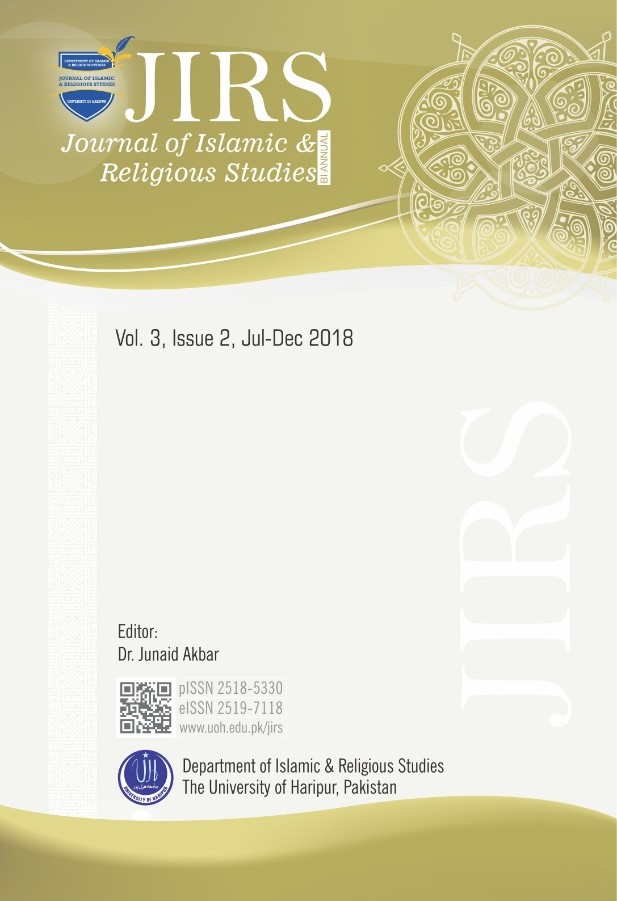Allegories in Mu'allaqa of Imru’ al-Qais
DOI:
https://doi.org/10.36476/JIRS.3:2.12.2018.15Keywords:
Arabic prose and poetry, Jāhilīya literature, Muʽallaqāt, Imru’ al-Qais, rhetoric of ancient poetryAbstract
There are two major parts of Arabic literature i.e. prose and poetry. Arabic poetry has a great value among the critics and the literati. A series of seven poems known as Muʽallaqāt Sabʽa or ʽAšhara have a great deal in the Arabic poetry. These are the collection of seven or ten long poems that are considered as the excellent work of the pre-Islamic era known as Jāhilīya ages. These poems had been presented in the annual fair of Okaz on the occasion of pilgrimage and awarded to be the top class creative works. After that judgment, golden genres were written with silk and recited judgment, as well as taught consecutively up to date. The ancient Arabic literature is full of such like prized poems but the valuable position met to this compilation is unprecedented. Since the poets of these master pieces are among the most famous figures of the 6th century taken together, these poems provide a good picture of Budouin life besides its connotation of rhetorical semantics figurative devices are tricky during its studies. Metaphor, trope, allusive ironies, metonymies and many more colloquial figures of speech are to be observed in this renowned collection. This article deals with the rhetorical study of Muʽallaqa of Imru’ al-Qais, by identifying the magnificence of assimilation and critism on his poem, alond with the analysis and explanation of its objectives.


